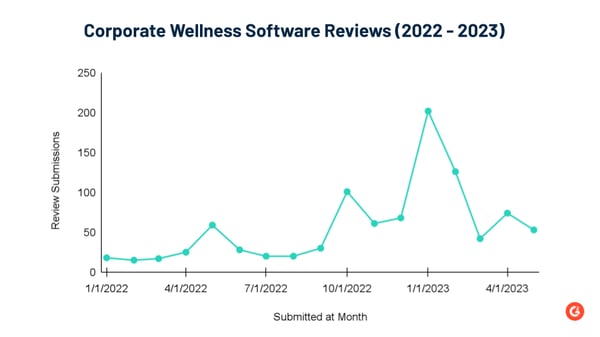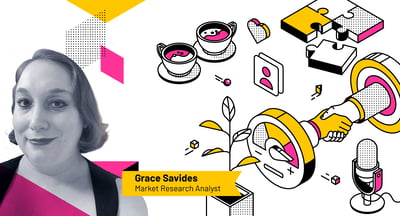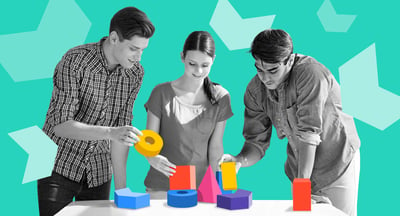

*Trigger warning: depression, anxiety.*
Mental health has never been more important in the workplace.
Around 15% of working-age adults have a mental disorder at any one point in time.
The corporate wellness software market is expected to reach $714.31 million by 2030. With these issues top of mind, many recently attended SHRM’S Virtual Mental Health Retreat sponsored by Calm Business.
SHRM, also known as the Society for Human Resource Management, hosted a day of speakers and panels with professionals such as SHRM CEO Johnny C. Taylor Jr., Calm CEO Jay Sherfty, Arianna Huffington, and several other professionals to present anecdotes and evidence on the changing face of mental health in the corporate world.
In this article, I’m sharing the highlights you should consider implementing in your office. So here are the big takeaways on mental health and how software can help your office address mental health better.
Here are five ways in which you can start doing a better job of prioritizing mental health from the top to the bottom of your company.
The first and most important takeaway from the conference is that mental health isn’t a “nice to have.” It’s essential, especially post-pandemic. The word “unprecedented” came up multiple times in the conference, discussing how the changing world and many things to juggle in the modern world make it harder than ever for employees to juggle their responsibilities and mental health.
Tip: Mental health support is no longer a “nice-to-have” in the workplace. Help employees understand employee assistance programs (EAPs) to other perks with benefits support software and employee perks software.
There are multiple types of software that can help with this goal:
The importance of corporate wellness software is reflected in G2 data. Though this interest tends to ebb and flow, it’s definitely grown steadily in the past year and a half or so. It’s hard to know for sure why the peaks and valleys, but here are some thoughts.
People review software when they use it the most, and it goes together with healthcare enrollments. October and January are both times when people are either signing up for new plans or using them for the first time—a time when organizations are likely to direct people toward corporate wellness software.
These peaks also coincide with popular holidays. The holiday season is from October to December, while the new year comes in January for many places around the world. During this time, people may be exploring their new year goals, of which mental wellness and meditation are often popular.

Despite dips, the Corporate Wellness Software category is experiencing steady growth.
What is clear is that the interest is slowly rising. With an average of 15.1 months before seeing ROI, at least between 2020 and 2023, corporate wellness software is an investment that takes some time to manifest. This is something to consider as more companies think about mental health and put money into accompanying software.
A second important conference takeaway came from a session starting with a much-needed mindfulness meditation. Multiple speakers discussed the benefits of building breaks during the day and the difficulties therein. A recent study from the University of Waterloo showed employees are resistant to breaks despite high levels of stress.
The BRB: The Working World Takes a Break panel included Calm Business chief purpose officer Jay Shetty, Accenture chief health officer Tamarah Duperval-Brownlee, SHRM senior vice president George Rivera, National Alliance on Mental Illness chief medical officer Ken Duckworth, and Arianna Huffington, renowned media figure, co-founder of the Huffington Post and founder & CEO of Thrive Global.
Here were some of the biggest touchstones from the panel discussion:
During crunch time, it’s easy to forget that humans need to reset. Even something as simple as five minutes is truly transformative. Multiple studies show that breaks make people more productive and combat burnout. So why chance it?
Water, window, and walk—stay hydrated, take a moment to look outside (or at least rest your eyes), and move your body. One study showed concentration improving by 8% after looking at nature on a break. Even something as simple as a stroll around the apartment will do.
HIIT workouts are a type of exercise regimen based on intervals. It includes high periods of activity followed by short periods of low-intensity activities. It includes breaks. Think of nonstop work, like doing a HIIT workout without stopping. It increases burnout and doesn’t have the same advantages.
Meditation and mindfulness are difficult for people who haven’t tried them before or aren’t receptive to taking the time to slow down. Start with 60 seconds of breathing and clearing your mind. Meditation or mindfulness may not be for everyone, but you can get most people to try for 60 seconds.
During The Advantages of Employee Care, run by Vincent Branchesi, the MetLife national director, Group Benefits Center of Excellence, the discussion turned to the truth of different generations in the workplace.
Within the next few years, we’ll see a workforce made up of (roughly) five generations. With the last of the Silent Generation leaving and Gen Alpha soon to enter, it’ll be that way for a while. Even without them, four generations are a lot to cater to. So what does that mean?
Source: CareGivers of America
Generational differences matter in the workplace.
A post-college 20-something with roommates has some distinct needs from a 65+ homeowner. Some generations are more receptive to discussing emotions openly in the workplace. Some may be more traditional. Some may place a greater focus on career development. Others may be more concerned with steady hours and solid benefits.
No generation is a block, either. Intergenerational workplaces bring together a fantastic mixture of ideas formed by unique circumstances. Diversity of thought increases a workplace’s innovation, but it’s still important to form a cohesive culture that gives everyone what they need.
And some needs, like flexibility, adequate compensation, good relationships, and a positive culture, carry across all generations. Ultimately, having multiple generations in your workforce can lead to higher productivity, as shown in one study. The diversity of thought, when led by respectful management, makes for a better workplace.
Speaking of different generations, do you know how to take care of your caregivers?
Wellbeing in the Workplace: Cisco Shares How Amplifying and Integrating Wellness Helps Employees Thrive was led by Sheila Champion-Smeeth, the global head of wellbeing at Cisco, and Meisha-ann Martin, senior director of people analytics and research at Workhuman.
It went over a whole host of ways in which employees need their needs met, but one of the biggest topics of conversation was about caregivers. Caregivers are a much bigger part of the workforce than ever, and the session focused in part on discussing the unique challenges they face at work and at home.
The Rosalynn Carter Institute for Caregivers showed that not only are 19% to 22% of workers caregivers, but most do an extra 20 hours of unpaid labor in this role. On top of that, 24% of U.S. adults fall into what’s known as the “sandwich generation” with at least one parent over the age of 65 and raising a younger child or helping an adult child financially.
There are no two ways about it. Flexibility is essential for such workers across the board. They’ll need to accommodate daycare for adults or children, sports schedules, doctor’s visits, nursing visits, and respond to any number of emergencies.
Emotionally, they may need extra support. Caring for anyone is a huge responsibility. Are your managers prepared to offer the help they need? Or, on the flip side, they may want to keep everything at home. Respect privacy and maintain healthy boundaries no matter what their wishes.
There is more to empathy than a quick “How are you doing?” check. However, there’s nothing wrong with making that a good place to start.
In Making Mental Health a Top Priority in the New World of Work led by SHRM President and CEO Johnny C. Taylor, Jr. and Calm CPO Scott Domann, both speakers discussed what being a mindful manager means.
More than the quick takeaways, however, is about building a culture of empathy and respect.
You never know what someone is dealing with. Whether it’s a bad day, situational issues, grief, chronic illness, or even long-term mental health issues like anxiety and depression—managers need to know how to deal with these issues, really listen and care about their employees, and get them the help they need.
This goes for every part of the workplace. When difficult decisions need to be made, especially when it comes to layoffs, empathy must lead the way. Both speakers on the panel entered into a hypothetical scenario, one that many managers dread. How do you give workers notice in an empathetic way?
In this scenario, they walked through the best way to give workers notice, not giving them too much time before specifics were made known. However, they stressed giving employees enough time to make arrangements. They talked about how to communicate without spiking fear in the company, providing them with severance and resources, and then checking in on the remaining workers after such a morale-decimating event is one of the most difficult ways to manifest true empath-led leadership.
From the smallest to the biggest decisions, leadership needs to be aware of their impact. When the hardest decisions are made, it’s important to lead with accountability and clear communication. Though the mental health of workers won’t escape unscathed, leading with honesty can keep a measure of trust and integrity intact even in the hardest of times.
Coming away from the SHRM’s Mental Health Virtual Retreat, made it clear how much the language around these issues has changed in even the past five years. From taboo topic to point of discussion, bringing transparency to the clear effects of mental health in the workplace paves the way to create solutions.
After a day of discussion about understanding the importance of mental health support, building workday breaks, catering to different generations, taking care of caregivers, and focusing on empathy-based leadership, it was invigorating to leave, prepared to bring this further into the software world.
From here, it’s all about praxis. Remove the stigma of mental health in the workplace. Turn to corporate wellness software, employee perks software, and benefits support software so employees can understand how to use all the necessary tools at their fingertips.
Create space for programs to evolve. Above all, be prepared to support workers no matter what the circumstances. It’s not about mindset, it’s about action, and the time is now.
Burnout is more common than you think. Find out how to recognize job burnout and lean on self care at work.
Edited by Sinchana Mistry
Grace Savides is a Senior Research Analyst who loves discussing all things HR. She enjoys exploring where the theory, policies, and data-driven side of the industry interacts with the unpredictable and ever-important human elements. Before G2, she worked in content marketing, social media, health care, and editing. She dedicates her leisure time to video games, painting, DND, and spending time with her wonderful boyfriend and two dogs.
This post is part ofG2's 2024 technology trendsseries. Read more about G2’s perspective on...
 by Grace Savides
by Grace Savides
Loneliness. Isolation. A sinking sense that you’re alone in the workplace.
 by Grace Savides
by Grace Savides
From navigating a massive tech stack to feeling underappreciated and overworked, such feelings...
 by Grace Savides
by Grace Savides


